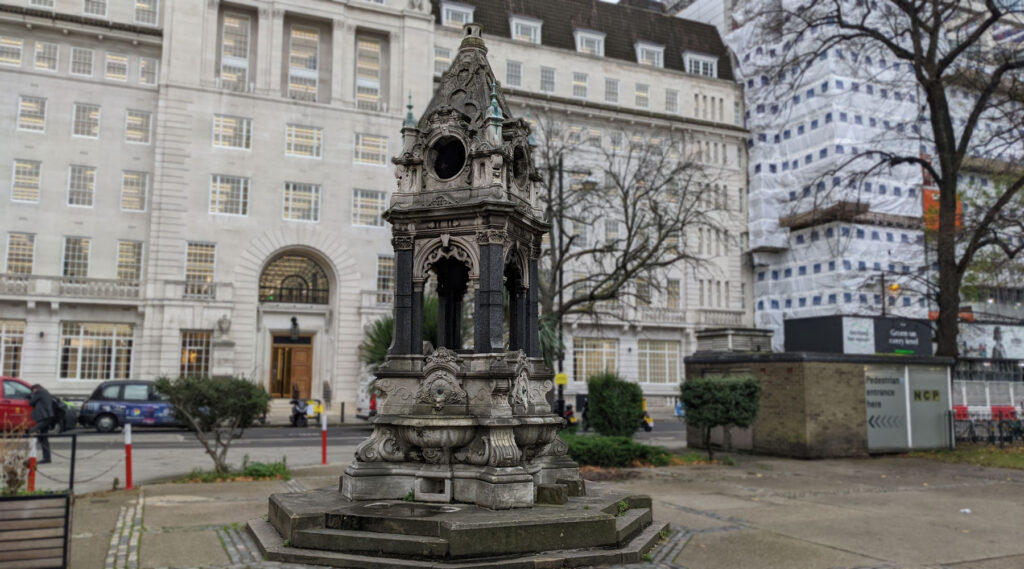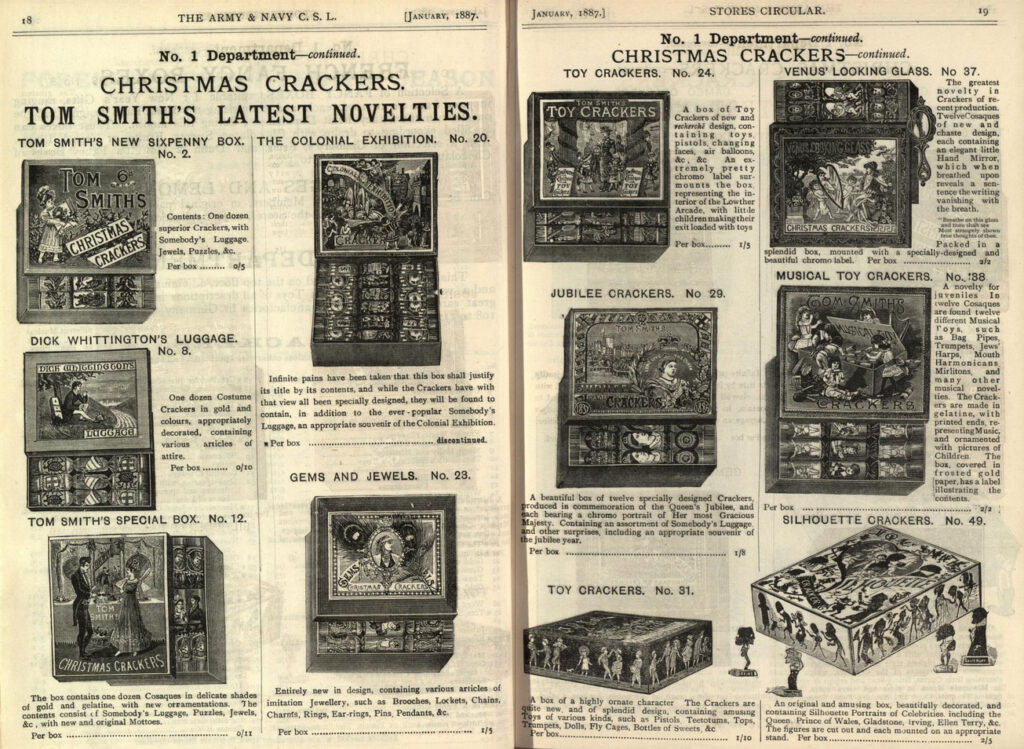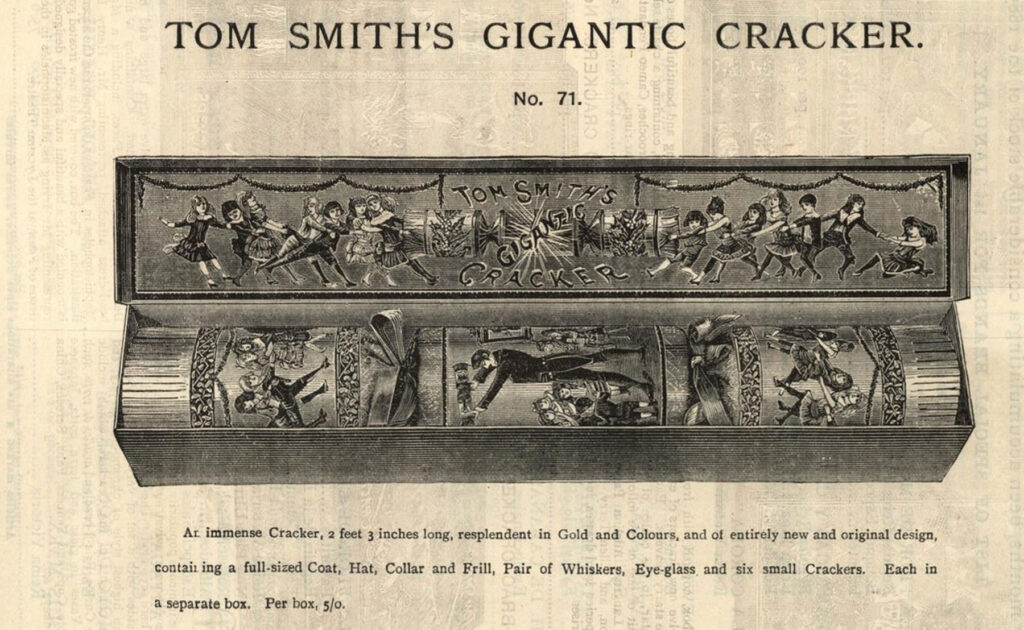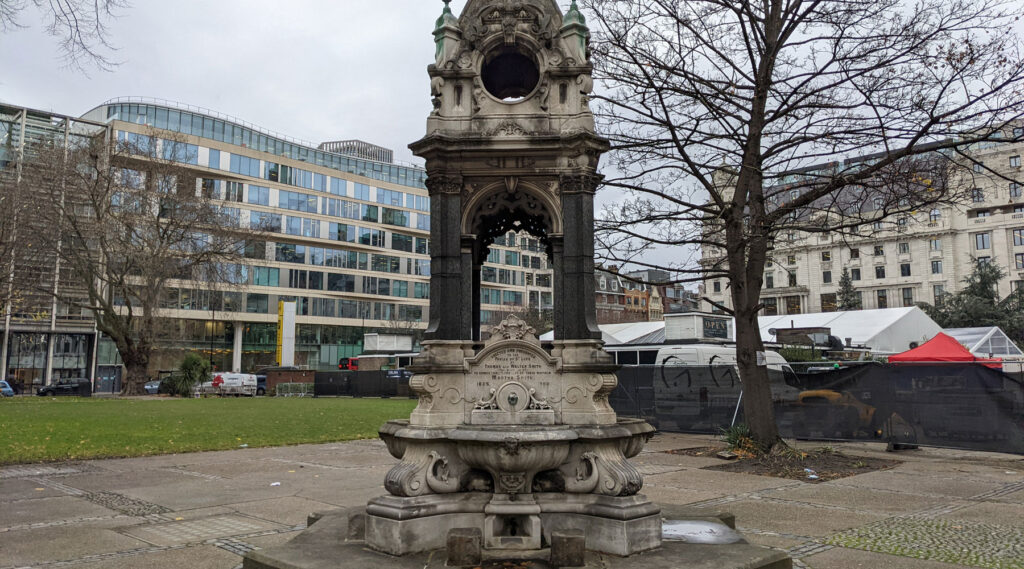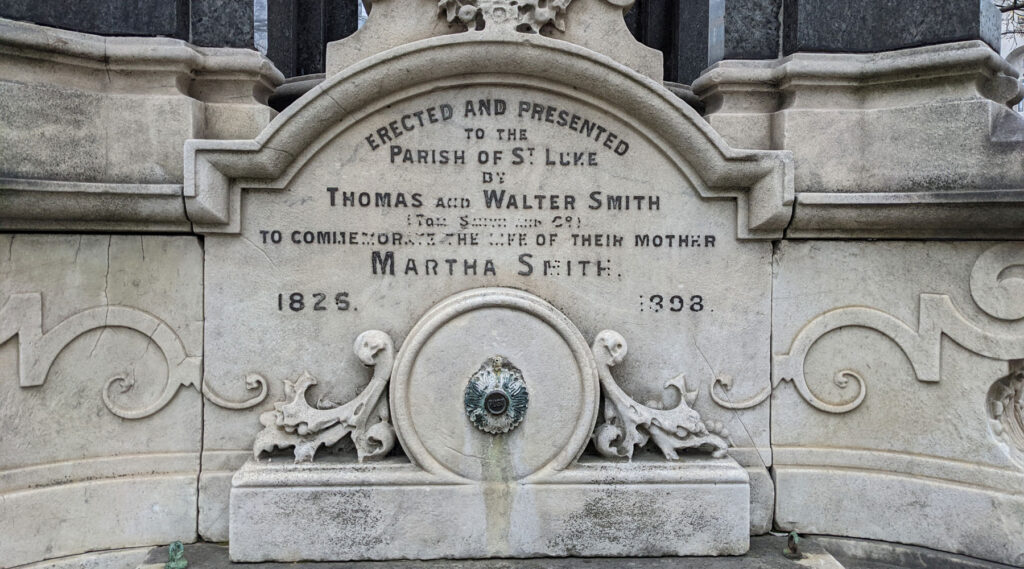What looks like a typically grand Victorian drinking fountain in the City of London is in fact a memorial to the family that invented the Christmas Cracker, well, sort of.
That the Christmas Cracker was invented in London is unchallenged, but some of the stories of how they were invented may itself be a later invention.
The gist is that Tom Smith, born in 1823, was apprenticed to a City of London confectioner, and after learning his trade he opened his first shop on Goswell Road in Clerkenwell in the 1840s. Seemingly destined for a life of baking cakes, it was a trip to Paris in 1846 that started him down the path to the Christmas Cracker.
It was here that he came across the French bonbon, a sugared almond wrapped in tissue paper with twisted ends. Back in London, he copied the idea, and they proved to be very popular at Christmas. At least for a while.
It seems that their fading popularity leads him to experiment with swapping the sweet inside the packaging with small trinkets, which candidly if the story is true is a remarkable leap of imagination for a confectioner to swap sweets for trinkets.
The breakthrough came in 1860 when Smith added the Bang. The legend says that he was inspired by the sound made by the crackle of a log fire and added the paper strip to create a bang to his product.
This part of the legend is probably wrong though.
That’s because there was already a product looking remarkably like a Christmas Cracker — the Waterloo Crackers, which were mainly sold around Guy Fawkes Night, but also at Christmas time, as a cheaper alternative to “Cracker Balls”, a type of small firework, and had been around since probably the 1800s, and there are lots of contemporary references to them in for example here in 1834, 1848, and 1869.
There is a reference in “The Art of Making Fireworks by Plain and Easy Rules” by T. Angelo which says that Tom Smith bought the idea for the Waterloo Cracker from a fireworks chemist.
So while it’s highly unlikely that Tom Smith invented the Cracker, he certainly did something that was to make him rich — he commercialised production, turning something made by the handful by individuals into a mass-produced item and lowered the cost of doing so.
In this sense, he’s a classic successful Victorian businessman — taking a common handmade rough and ready product and turning it into a reliably regular branded item sold in shops.
Initially sold as the Bangs of Expectation, they either quickly became known as Crackers, or more likely, they were assumed to be Christmas branded Waterloo Crackers, so the existing name stuck.
Tom Smith died in 1869, and the firm was taken over by his sons, Tom, Walter and Henry.
And it was Walter who turned a Victorian novelty into the modern Christmas Cracker when he added the paper hats to the crackers. Who was responsible for adding the bad jokes remains, for their reputation, safely anonymous.
The firm expanded, and by the 1890s, they employed some 2,000 staff in a factory on Wilson Street just around the corner from Finsbury Square. They even gained regal approval, with a Royal Warrant in 1906.
This all brings us to the drinking fountain in Finsbury Square. This was erected in 1899 in memory of the mother of the Smiths, Martha, and as a philanthropic gift to the local area. Designed and built by J Whitehead at a cost of nearly £1,000, it was unveiled on the afternoon of Monday 4th December 1899 by Lady Jeune.
It was paid for by Thomas and Walter Smith, the sons of Thomas and Martha Smith.
Walter Smith died in April 1923, and left an estate worth nearly £139,000, a fortune at the time, and all from selling Christmas Crackers. He also left bequests to his employees ranging from £25 to £500.
In 1953, Tom Smith & Company merged with Caley Crackers, and in 2005, it was bought by International Greetings. Although Tom Smith’s Christmas Crackers aren’t made in Finsbury Square anymore, and the bulk are made in China, the premium crackers are still made in the UK, at a factory in Hengoed, near Cardiff.
The Queen’s crackers come from here.
And occasionally, so did mine.
Father was involved with the setting up of the Queen’s Gallery, and so it was that sometimes our Christmas Crackers came from Buckingham Palace, and I can confirm they are rather better than the crackers you get in the shops.
You can still buy Tom Smith’s christmas crackers, just not the ones sold to Her Maj.

